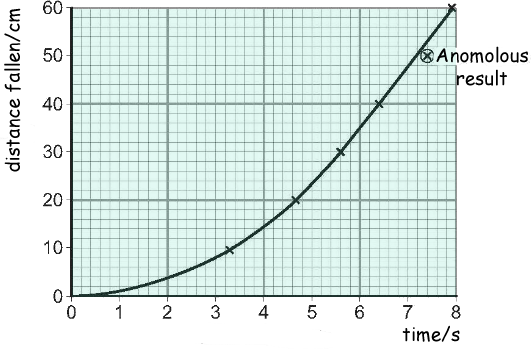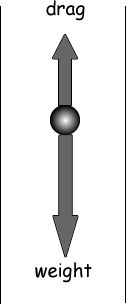GCSE Questions: Forces
Q2. Lucy investigated the change in speed of a ball-bearing as it fell through a tube filled with oil.
She measured the time it took to fall to different distance points, each time measuring the distance from the top of the oil.

(a) What is likely to be the main source of experimental error in this experiment?
[1 mark]
(b) Here are Lucy's results, plotted on a graph. She has identified one of her results as being 'anomalous'.

She believed that this was due to the stopwatch being started incorrectly for that reading.
She should have started the stop watch at the exact time she released the ball bearing.
(i) Did the anomoly occur because she pressed the stopwatch button before she released the ball bearing or because she pressed it after it had been released?
[1 mark]
(ii) During the first four seconds what happens to the speed of the ball bearing?
[1 mark]
(iii) The graph shows that the ball-bearing reaches terminal velocity. Calculate the terminal velocity from the graph.
[3 marks]
(iv) The diagram shows the two forces acting on the ball-bearing as it falls through the oil.

Explain, in terms of these two forces why the ball-bearing reaches terminal velocity.
[3 marks]
(c) The experiment was repeated using warmer oil and cooler oil.

After falling 40 cm is the drag force on the ball-bearing in the warmer oil greater or weaker than when it had fallen 40 cm in the cooler oil.
[3 marks]
[12 Marks TOTAL]











